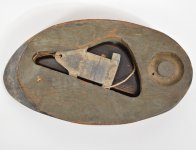Attachments
-
 H21725-L217537523_original.jpg80.3 KB · Views: 18
H21725-L217537523_original.jpg80.3 KB · Views: 18 -
 H21725-L217537524_original.jpg117.6 KB · Views: 20
H21725-L217537524_original.jpg117.6 KB · Views: 20 -
 H21725-L217537525_original.jpg145 KB · Views: 20
H21725-L217537525_original.jpg145 KB · Views: 20 -
 H21725-L217537530_original.jpg181.3 KB · Views: 17
H21725-L217537530_original.jpg181.3 KB · Views: 17 -
 H21725-L217537535_original.jpg161.7 KB · Views: 18
H21725-L217537535_original.jpg161.7 KB · Views: 18 -
 H21725-L217537537_original.jpg139.1 KB · Views: 18
H21725-L217537537_original.jpg139.1 KB · Views: 18 -
 H21725-L217537539_original.jpg195.1 KB · Views: 16
H21725-L217537539_original.jpg195.1 KB · Views: 16 -
 H21725-L217537544_original.jpg229.6 KB · Views: 17
H21725-L217537544_original.jpg229.6 KB · Views: 17 -
 H21725-L217537545_original.jpg175.4 KB · Views: 22
H21725-L217537545_original.jpg175.4 KB · Views: 22 -
 H21725-L217537546_original.jpg240.6 KB · Views: 22
H21725-L217537546_original.jpg240.6 KB · Views: 22 -
 H21725-L217537556_original.jpg209.4 KB · Views: 21
H21725-L217537556_original.jpg209.4 KB · Views: 21





